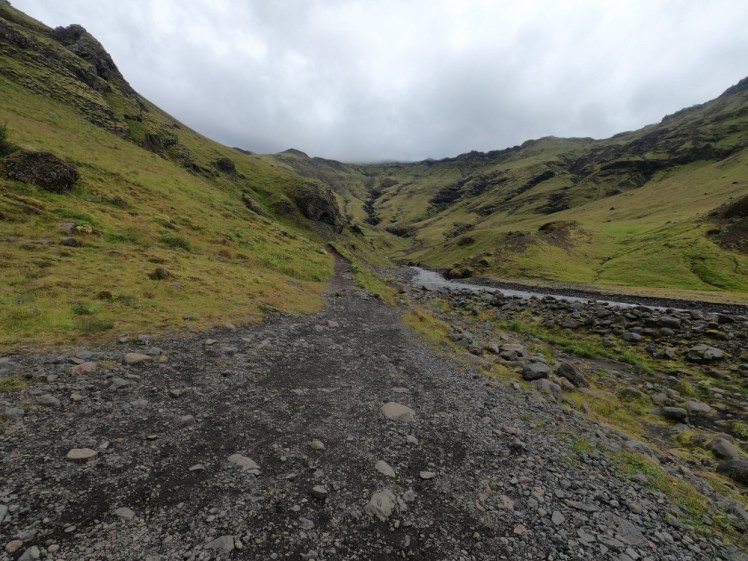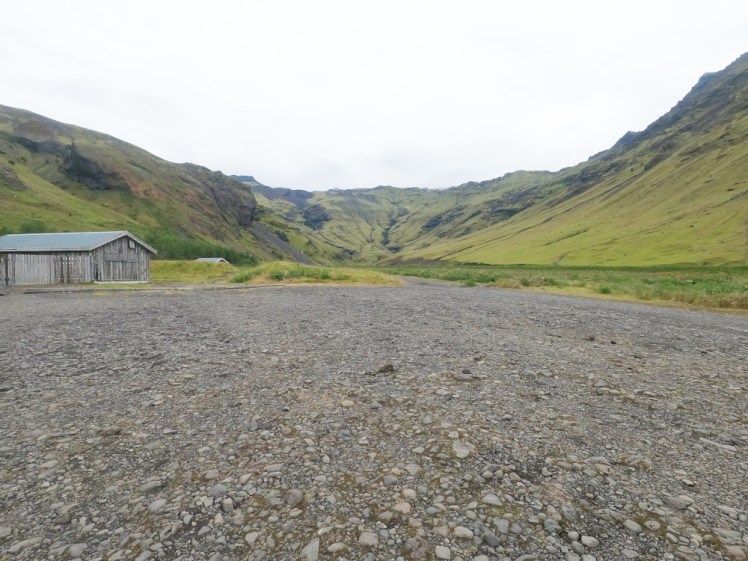Another hot pool post! This one, though, isn’t an overpriced tourist experience, designed from the ground up to be luxurious and expensive and special. This is Seljavallalaug, Iceland’s oldest swimming pool, hidden in the mountains at the foot of Eyjafjallajökull.

According to the documentary film Swimming Pool Stories, Seljavallalaug’s relatively remote location is mostly because that’s where there was hot water but it’s along that stretch of the coast because it was built in response to a ferry disaster over on the Westman Islands twenty years earlier, where all souls but one perished when the boat overturned in the harbour. I take it for granted that all Icelanders can swim today because almost all settlements with more than about ten inhabitants have a pool, but this was where it all started. Before 1923, people used the natural pools and mostly they just used them for washing. In 1923, Seljavallalaug came along and over the next fifty years, the swimming pools began to open all around the country. In 1927, so says Wikipedia, swimming lessons began in Seljavallalaug “as part of compulsory education”. Nowadays, it’s quite remote, quite green and reserved mostly for the curious and for the Instagrammer.
Let’s start with finding it. It’s on the south coast, between Skogarfoss and Seljalandsfoss. If you’re heading from west to east and you reach Skogarfoss, you’ve gone too far. If you’re heading from east to west and you reach Seljalandsfoss, you’ve gone too far. It’s a little road, marked 242 Raufarfell and the road looks like it’s heading directly into Eyjafjallajökull. This road turns to gravel partway up – at first, it’s a kind of smoothish mud but then it turns to proper rough gravel. Google Maps says to park in the first car park but I found a lot of people saved themselves a 250m walk by parking in the second. There’s no signage in either suggesting which you should be using so it really depends on how much store you set by Google Maps. Well, there is a sign. It says this is private land and you can only park here for three hours – that’s the closest hint you get that you’re in the correct place. The name Seljavallalaug is never used.

Walk up the track towards the mountain. You’ll pass two small houses on the left. I would strongly suggest not parking outside these houses. Again, there’s no sign about parking but I would say that this parking belongs to these houses and it would be impolite to leave your car outside them.
From here, it looks like you’re in the wrong place. There’s a wide gravel plain with a river rushing down one side and a stream weaving its way across. Keep the river on your right and find the bridge to cross the stream. The track is pretty easy to follow after this; it’s just where lots of feet have trekked along the mountainside, leaving a badger path. At one point, you’ll have the choice to go low or go high. Stay low. High looks like a better path but in fifty-odd metres, you’ll struggle to get back down to the proper path. You’ll see a big off-white water tank ahead – this supplies the hot water so you know you’re in the right place. It still seems impossible that there’s a swimming pool here. It just doesn’t seem like there’s space in the narrowing valley but in fact, behind an outcrop behind the tank, Seljavallalaug is lurking!

It’s very rough and ready these days. There is a run-down hut with three rooms, with duckboards on the floor and pegs on the wall. There’s no light, no toilets, no showers. When I was there, the doors in the two end rooms worked but the middle door was lying on the floor outside. None of them are designated male or female, you just use whichever you fancy or whichever is empty at the time of arrival.

It’s a 25m pool with a proper concrete wall around it but the mountainside wall is literally just the mountain. That means that plenty of the vegetation growing on the mountain ends up in the water. The water is already kind of greenish – I’m not sure whether that’s because the bottom of the pool itself is greenish or because the water going in is greenish. There’s a large boulder about halfway down – past this, the bottom of the pool drops away quite alarmingly, especially as the water is too green to see how deep it is. There’s a ladder at the end, a hot water pipe delivering a constant supply of fresh water and there’s a little waterfall trickling down the mountainside that delivers a very fresh if small supply of hot water. That means the shallow end is a little cooler than the deep end – in fact, the shallow end is definitely on the cool side for a geothermal pool. By that, I mean that if you’re expecting water of a similar temperature to the likes of the Blue Lagoon, you’re going to be disappointed. It’s probably a bit warmer than the lane pool at the local village swimming pool, though.

No one’s swimming lengths in Seljavallalaug. No one’s luxuriating in velvety hot water. You’re either here for the novelty of bathing in Iceland’s oldest and wildest pool or you’re here for Instagram photos. In the latter case, there will probably be half a dozen other people in the pool at any time. Don’t count on having it to yourself and don’t think your photos take priority over everyone else’s dip.

If you’re after a genuine authentic Icelandic pool experience, this is where it all started. This is where the modern bathing and swimming concept started. Icelanders have been sitting in natural hot pots ever since the Settlement era but the whole idea of everyone swimming in naturally-heated pools started right here, in the thick of nature. So much of what we think of as “real Iceland” is either very recent (the lopis, the round-necked jumpers, date back less than 100 years) or is aimed squarely at tourists (see pretty much any geothermal spa/pool/experience since the Blue Lagoon – oddly enough, the only one of the ten that was created by Icelanders for Icelanders). Seljavallalaug is the real thing.

2 thoughts on “Finding Seljavallalaug”